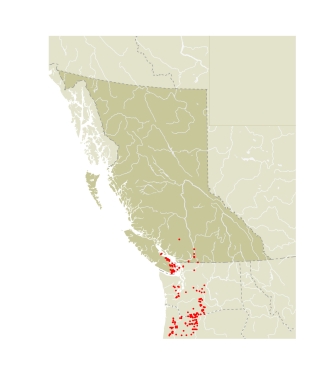The name Erynnis is derived from the Erinnyes or Furies who harried wrongdoers (Emmet 1991). Schrank used the generic name for all skippers, and used it to describe the erratic flight characteristic of skippers, as though they were avoiding the Furies. The Erinnyes sprang from the dark, thus the common name "duskywings" in reference to the dark wings. Scudder (1889b) was the first to use the name "duskywings" for the genus.
This and the remaining genera of the Pyrginae have rounded forewing tips, short discal cells, inconspicuous antennal tips, and porrect palpi. The genus Erynnis is distinguished by the mottled black background of the wings, hence the common name "duskywings". This Holarctic genus contains 17 Nearctic and 5 Palearctic species. Five species are found in BC. Closely related genera are all Neotropical. The larvae of this genus have been recorded as feeding on Quercus, Salix, Populus, Ceanothus, and Fabaceae. The various BC species cover this wide range of foodplant preferences, but individual species are restricted to one or a few closely related foodplants. Burns (1964) wrote the definitive work on the genus. Reference to Lindsey et al. (1931) is necessary for drawings of male genitalia, the only reliable structures for distinguishing most species. The shape of the left valve is the critical characteristic.
|
|

